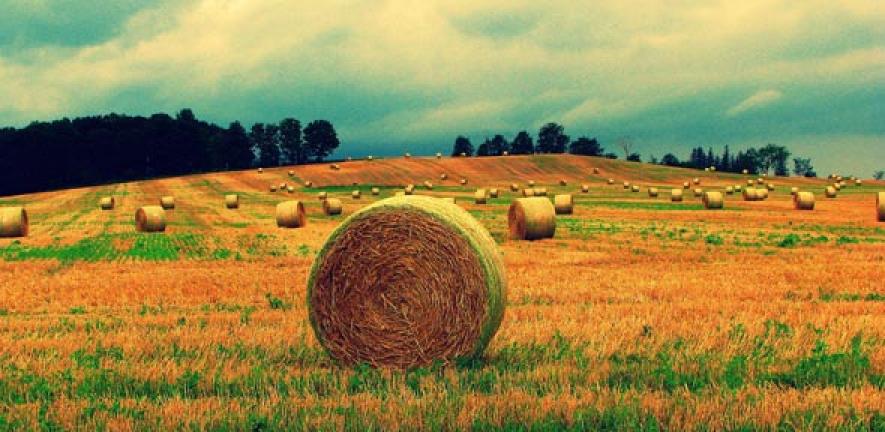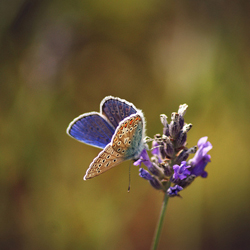
Despite political proclamation of increased environmental focus, experts argue that the European Union’s recent agricultural reforms are far too weak to have any positive impact on the continent’s shrinking farmland biodiversity, and call on member states to take action.
Despite political proclamation of increased environmental focus, experts argue that the European Union’s recent agricultural reforms are far too weak to have any positive impact on the continent’s shrinking farmland biodiversity, and call on member states to take action.
The targets implicitly assume that the biodiversity-related measures under the CAP are effective at protecting wildlife
Lynn Dicks
Latest reforms of the EU’s Common Agricultural Policy (CAP) have been declared significantly “greener” by the Members of the European Parliament, following promises to make the environment and climate change ‘core issues’ for the new CAP.
However, leading conservation experts writing in the journal Science warn that after three years of CAP negotiations the environmental reforms are so diluted they will be of no benefit to European wildlife, and biodiversity will continue to decline across the continent.
Under the new CAP almost a third of direct payments to farmers are now subject to conditions relating to ‘greening measures’. However, disagreements over the measures have led to a wide range of exemptions being put in place.
After analysing the details of the reformed CAP, experts from a number of major organisations revealed that about half of all farmland and 80-90% of all the farmers in the EU could be exempt from having to abide by two of the three new environmental requirements. At the same time, budgets to support voluntary ‘greening measures’ have been reduced.
Individual member states must use the flexibility offered by the reforms to design national plans for sustaining ecosystems, say the experts. Unless member states take serious steps beyond those required for the CAP, the EU’s own biodiversity targets for 2020 are very unlikely to be met.
The experts – who range from scientists to policy analysts and conservationists – offer six ‘immediate actions’ that states should take. These include comprehensive mapping of existing grasslands and increasing the availability of ecological expertise to farmers. They also list six recommendations for the EU to consider towards the next, still-much-needed revision of the CAP.
They hope these recommendations encourage individual states and the EU as a whole to move towards sustainable agriculture, securing vital ecosystems for “current and future generations”.
“The targets implicitly assume that the biodiversity-related measures under the CAP are effective at protecting wildlife. While some specific, carefully designed actions – such as planting flowers for pollinators, restoring species-rich grassland, or providing nesting areas for ground-nesting birds – have been shown to work when properly implemented, these are not included as options under the new compulsory greening elements,” said Dr Lynn Dicks, a co-author from the Department of Zoology in the University of Cambridge.
“The weak environmental reforms in the CAP put the fate of Europe’s declining biodiversity in the hands of the individual member states,” said Dr Guy Pe’er, lead author from the Helmholtz Centre for Environmental Research, who collaborated with Lynn Dicks and William Sutherland from Cambridge, as well as experts from RSPB, the Society for Conservation Biology and others.
“The EU should openly communicate this dependency, and encourage member states to make responsible decisions, rather than pretend that the reform allows meeting the EU’s important ecological targets,” he said.
Expansion of the EU and its common market continues to drive agricultural intensification across Europe at the expense of wildlife and natural habitats, say the experts.
The Common Agricultural Policy – which uses almost 40% of the EU’s budget and influences the management of half of its entire territory – provides subsidies that increase the scale of farming throughout the EU. This has led to increased grassland conversion and peatland drainage. The situation is particularly severe in new member states, where the use of agri-chemicals such as fertilizers has shot up.
This continues to take a heavy toll on wildlife, with dramatic declines in everything from the farmland bird index to ‘permanent’ grassland that, in newer member states, has shrunk over 11% in just the last decade. 
To address this, the new CAP made 30% of all direct payments to farmers conditional on compliance with three ‘greening measures’: establishing Ecological Focus Areas, maintaining permanent grasslands, and setting minimum requirements on number of crops grown to stop areas slipping into homogenous ‘monocultures’.
However, following thorough analysis, experts have found that the large number of clauses introduced to the greening measures exempt over 88% of farmers in the EU, and over 48% of its agricultural areas from having to incorporate Ecological Focus Areas. 81% of arable farmers are now exempt from the crop diversity measure, and the grassland measure allows another 5% decline in area.
“The measures themselves do not include quality criteria for what counts as green,” said Pe’er. “The thresholds set will allow on-going intensification under a green label”.
They conclude that the CAP reforms fail to fulfil Target 3A of the EU Biodiversity Strategy, which explicitly requires the EU to “maximise areas […] covered by biodiversity-related measures under the CAP”.
“The CAP should pay for ‘public goods’ associated with sustainable farming: thriving wildlife, beautiful landscapes, clean water, fertile soils, land that contributes to a stable climate, and diverse communities of wild insects to pollinate crops or regulate pest outbreaks. These are things enjoyed by everyone but not so easy to pay for through food sales,” added Dicks.
“Finding a way to produce enough food for humanity without losing these assets is perhaps the biggest challenge of the twenty-first century. Unfortunately, the latest CAP reform has not found a way to secure them.”
Inset image: Common Blue Butterfly by Matt Clark
The text in this work is licensed under a Creative Commons Licence. If you use this content on your site please link back to this page. For image rights, please see the credits associated with each individual image.





